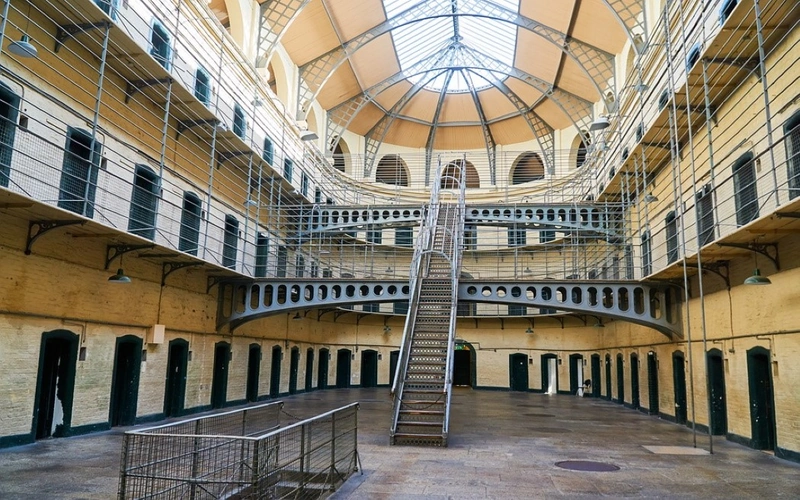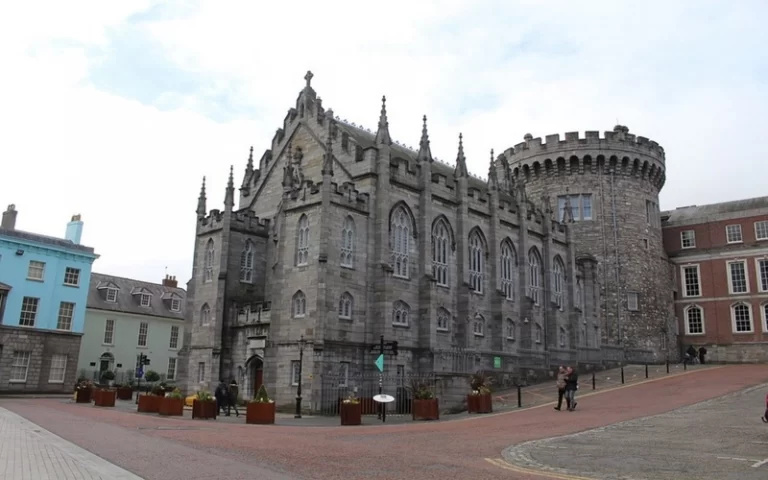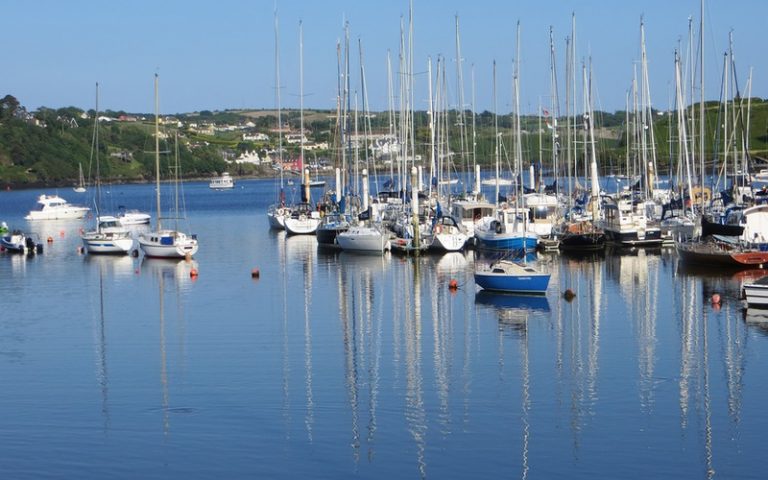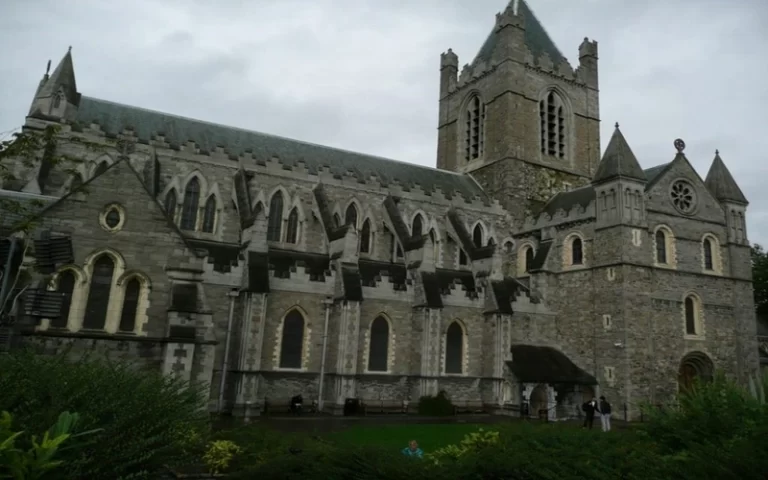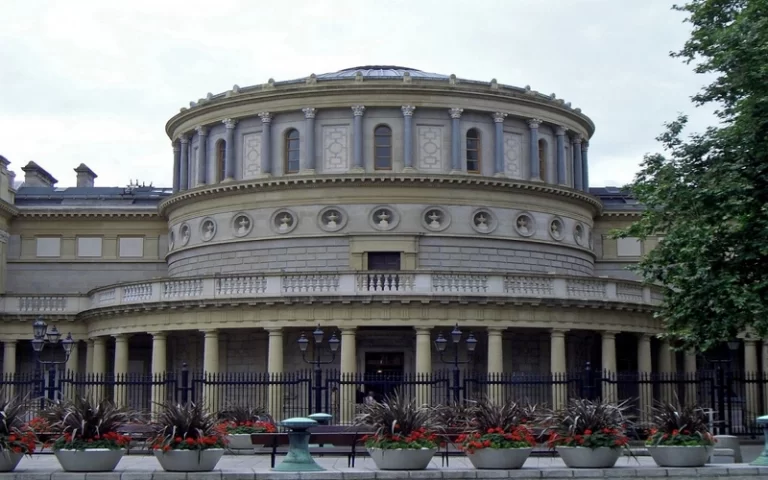Kilmainham Gaol Dublin
Kilmainham Gaol is a former Irish prison. It was opened in 1796 and decommissioned in 1924 after the Irish Civil War. It is now empty of prisoners but filled with Irish history.
Originally, conditions in this prison were very poor. Each cell was dark, cold, and small. There was no segregation of prisoners, with up to 5 in each cell. With only a single candle for light and heat, most of the time was spent in the cold and the dark as each candle had to last for two weeks.
Children were sometimes arrested for petty theft, while many of the adult prisoners were transported to various penal colonies in Australia. Originally, public hangings took place at the front of the prison.
Its history as an institution is intimately linked with the story of Irish nationalism, with the majority of the Irish leaders in the rebellions of 1798, 1803, 1848, 1867, and 1916 imprisoned here.
Fourteen of the leaders of the 1916 Easter Rising were executed here by the orders of the British Government. They were Patrick Pearse, Thomas Clarke, Thomas McDonagh, Joseph Plunkett, Edward Daly, Michael O’Hanrahan, Willie Pearse, John Mac Bride, Eamonn Ceannt, Michael Mallin, Sean Heuston, Con Colbert, Sean MacDiarmada, and James Connolly.
The executions were carried out by firing squad in the nearby stone yard. They were transported to the military cemetery at Arbour Hill for burial.
There is a very sad story about one of those who died — Joseph Plunkett. He married his fiancé, Grace Evelyn Gifford, a few hours before he was executed. This story is told in the song “Grace” by Jim McCann.
Grace Gifford was an Irish artist and cartoonist who was active in the Republican movement. Some years later, she found herself back in a cell in Kilmainham Gaol for publishing anti-British literature.
The executions fuelled an increase in popular support for the struggle for Irish independence both in Dublin and throughout Ireland.
Many other rebels were held in custody in Kilmainham Gaol after the Easter Rising, during the Irish War of Independence (1919-1921), and during the Irish Civil War (1922-1923). These included Eamon de Valera and Constance Markievicz.
Eamon de Valera, who was an anti-treaty IRA leader, was the last prisoner in Kilmainham Gaol. He later went on to serve as Taoiseach (Irish Prime Minister), and later again as President of Ireland. Many other survivors of the Rising went on to become political leaders of the independent Irish state.
Currently, the prison is a museum run by the Office of Public Works, an agency of the Government of Ireland. It is one of the country’s most important historical monuments with excellent guided tours covering Irish history from 1796 to 1924.
Official site: Kilmainham Gaol

